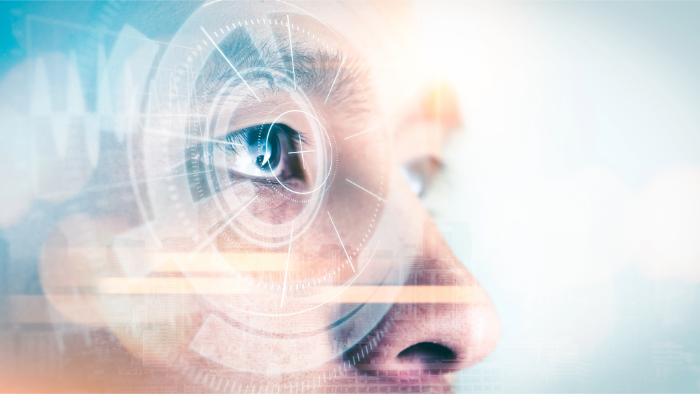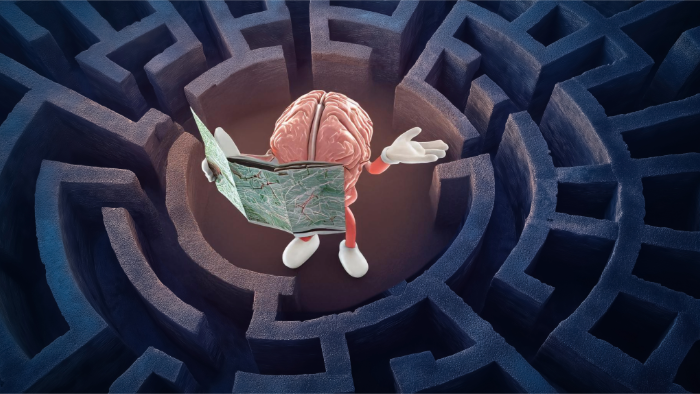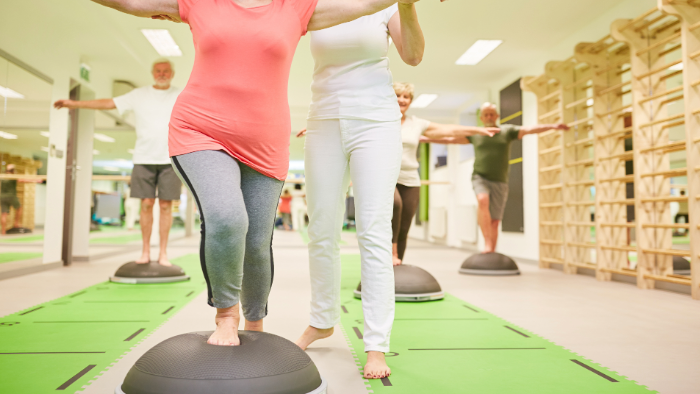Unlocking the Secrets of Spatial Orientation: How Your Body Knows Which Way is Up
Essential Points:
Your Balance System Relies on Three Key Players: Your ability to stay upright and oriented depends on a collaboration between the vestibular system (inner ear), vision, and the somatosensory system (body awareness), all of which provide crucial feedback to the brain about your position in space.
Sensory Mismatches Can Lead to Disorientation: When these systems send conflicting signals, such as during motion sickness or dizziness, it can cause confusion and disorientation, leading to feelings like vertigo or even nausea.
Visual Cues Can Trick Your Brain: Visual illusions, like the "train effect," show how easily our brain can be fooled by visual cues, overriding other sensory information and temporarily altering our sense of motion or position.
Have you ever found yourself standing up too quickly, only to feel the world spin around you for a few seconds? Or maybe you've been on a roller coaster and felt disoriented, not entirely sure which way was up or down as the wind rushed past you. If so, you've experienced what happens when your body’s natural sense of orientation gets a little scrambled. But on most days, without you even realizing it, your body has a fantastic system in place to keep you balanced and aware of where you are in space.
So, how do you know which way is up? It’s not something you consciously think about, but your brain and body are constantly hard at work, interpreting multiple signals to help you stay upright and oriented. Let’s dive into the fascinating process behind it.
The Three Systems That Keep You Upright
Your ability to know which way is up comes from a collaboration between three key systems: the vestibular system, vision, and the somatosensory system. Each plays a unique role, and together they keep you balanced and aware of your position in space. Think of it as a team effort, where all members need to work together for things to go smoothly. If one member gets out of line, the other two try to pick up the slack and correct course through a process called sensory reweighting.
1. The Vestibular System: Your Inner Ear's Compass
The vestibular system, located deep within your inner ear, is one of the primary systems responsible for detecting your head’s position and movement. (1) It’s essentially your body’s internal GPS for balance.
The vestibular system consists of two main parts:
The semicircular canals: These detect rotational movements. There are three of these canals, oriented in different directions, to pick up motion when you turn your head side-to-side, nod up and down, or tilt your head.
The otolith organs (utricle and saccule): These detect linear movements and respond to gravity, which is key in helping you know which way is up. These organs contain tiny crystals that move when you tilt your head or when your body accelerates, sending signals to your brain via hair cells to let it know you’re moving or tilting.
But how does this actually help you figure out which way is up?
The vestibular system is constantly sending information to your brain about your head’s orientation in relation to the gravitational pull of the Earth. If you tilt your head back, for example, the tiny crystals in your otolith organs shift, and this movement triggers hair cells in your inner ear. These hair cells then send signals to your brain, telling it that your head is tilted, so it can adjust your body accordingly to keep you balanced.
Vestibular System Fun Fact:
Did you know astronauts in space have a harder time with balance? Without gravity, the vestibular system can’t function the way it does on Earth, leading to disorientation. (2) Nothing pulls the crystals around when they move their head. That’s why many astronauts experience a type of “space motion sickness” as their vestibular system adjusts to weightlessness!
2. Vision: Your Visual Anchors to the World
Your eyes do a lot more than help you see, they play a crucial role in maintaining your sense of orientation to the world around you. (3, 4, 5)Whenever you look around, your brain is using visual cues to compare objects and figure out your place in relation to them. This is why closing your eyes, even while standing, can sometimes make you feel unsteady. You lose the visual representation of your position in space.
Visual Cue Examples:
When you’re standing upright and looking out at the horizon, your brain uses the horizon as a reference point to orient you.
If you’re in a room with walls, your brain notices the vertical and horizontal lines to confirm what "upright" looks like.
When you move your head, your brain processes how your view changes in response, helping to confirm your movement.
It’s all about constant feedback. Your brain is continuously comparing what your eyes are seeing with what it expects to see based on your movement. If everything lines up, you feel balanced and oriented.
But sometimes vision can be tricked, and your eyes can deceive you. Think of an optical illusion that makes it hard to tell which way is up or down? Kind of like those upside down rooms in illusion museums. In those moments, your brain is being fed conflicting visual information, and it can temporarily scramble your sense of orientation.
This is why visual input isn’t always enough on its own. You need your vestibular system and somatosensory system to work alongside it.
3. Somatosensory System: Proprioception and Your Body’s Self-Awareness
While the vestibular system and vision work together to give you the big picture of where you are in space, the somatosensory system is all about the subtle, internal signals your body sends to let you know where your limbs and body parts are. In this case we are going to talk much more about proprioception, or rather how your body knows where it is in space without looking, over other parts of the system such as touch and pressure. (6)
Proprioception relies on specialized receptors in your muscles, tendons, and joints that constantly monitor their position and movement. Even with your eyes closed, you can still touch your nose because your proprioceptive system is telling your brain exactly where your arm is in relation to the rest of your body. This awareness of your body’s position, even without looking, is crucial for maintaining balance.
Proprioception Examples:
If you’re walking on uneven terrain, like hiking a rocky trail, your proprioceptive system helps adjust your foot placement with each step to keep you from losing balance. Your head can stay in the same position, but you know your ankle is on a slanted rock.
When you’re standing upright, it helps you make tiny muscle adjustments without thinking, so you don’t tip over.
Proprioception often works in the background, but its role becomes very noticeable if it’s disrupted, like when you’ve had a leg fall asleep and suddenly can’t tell where your foot is without looking.
If you want to dive deeper on these three systems click here.
What Happens When These Systems Disagree?
While your vestibular system, vision, and somatosensory system usually work together seamlessly, there are times when these systems don’t agree, leading to some pretty confusing, and often uncomfortable, experiences. When the information from these systems is mismatched, your brain struggles to make sense of it, which can result in dizziness, disorientation, or even nausea.
Let’s break down some of the common scenarios when these systems can get out of whack and how it affects you.
1. Dizziness and Spinning Sensations
One of the most familiar examples of your body systems clashing is the feeling of dizziness, especially after activities like spinning around in circles, such as when you were a kid. Here’s what’s happening:
Vestibular system confusion: When you spin around, the fluid in your semicircular canals (the part of your inner ear responsible for detecting head rotation) starts to move. Once you stop spinning, that fluid keeps moving for a few moments, sending signals to your brain that you're still rotating, even though you’ve come to a stop.
Think of stirring a cup of liquid. If you stir fast enough you can make a tornado-effect that will last a few seconds after you stop stirring. The same is happening in your inner ear.
Mismatch with vision and proprioception: While your vestibular system is reporting continued movement, your eyes see that the world has stopped spinning, and your proprioceptive sense tells you that your body is no longer turning. This conflicting information leaves your brain confused, resulting in the classic dizzy or lightheaded sensation. It takes a few seconds for the fluid in your ears to settle and for your brain to recalibrate, but in the meantime, you may feel unsteady or disoriented possibly needing to hold on for support.
2. Motion Sickness
Motion sickness is another classic example of a sensory mismatch. (7) This happens when your body is in motion, but your visual and somatosensory systems aren’t picking up the same signals. This often happens in the car, but can also happen with experiences such as virtual reality. Here’s how this sensory tug-of-war plays out:
Vestibular system says "we’re moving": Imagine you’re sitting in a moving car or on a boat. Your vestibular system feels the motion of the vehicle as it accelerates, turns, or bounces over bumps. This part of your body is registering the movement, sending signals to your brain that you’re in motion.
Vision says "we’re still": But if you’re focusing on something stationary like a book, phone, or even just looking at the interior of the vehicle, your eyes are telling your brain that you’re not moving at all. Your vision doesn’t see the world passing by or notice the subtle movements of the vehicle.
Somatosensory system says "we’re still": Your proprioceptive sense, which senses the position of your body and limbs, might also be telling your brain that you’re relatively still, especially if you’re sitting down and not actively engaging your muscles.
This mismatch creates confusion in your brain because the signals coming from your inner ear don’t match the stationary signals from your eyes and proprioception. The result? Motion sickness, which can make you feel dizzy, nauseous, or even cause vomiting. This is why those with motion sickness often have to sit in the front seat, next to a window, or even drive the vehicle themselves. (8) They need to use more cues and feedback from the passing world to reduce their motion sickness.
Why Do Some People Get Motion Sickness More Easily?
Motion sickness sensitivity varies from person to person, and some people are more prone to it than others. (7) It’s believed that people with more sensitive vestibular systems or those who rely more heavily on their visual input for orientation may be more susceptible to this sensory mismatch. Age, gender, genetics, and even how frequently someone experiences motion (such as traveling by car, plane, or boat) can also play a role. Additionally, those who are more prone to driving and being in control may be at higher risk of motion sickness if they are a passenger.
3. Vertigo
Vertigo is a more extreme and prolonged version of dizziness, often caused by specific conditions affecting the inner ear. (9) Unlike the temporary disorientation you might feel after spinning in circles, vertigo can last much longer, be much more disorienting, and has the potential to be much more dangerous in regards to falling. Here’s what happens:
Vestibular system malfunction: In cases of vertigo, there’s usually a problem with the inner ear, such as inflammation, calcium crystals becoming displaced, or other issues that cause the vestibular system to send faulty signals to your brain. These signals tell your brain that your head is moving, even when it’s not.
Mismatch with visual and proprioceptive input: While your vestibular system is sending signals of movement, your vision and somatosensory systems are telling your brain that you’re still. This creates a powerful sensory conflict that results in a spinning sensation or feeling like the world is tilting, even when you’re stationary.
Unlike dizziness, which usually resolves quickly, vertigo can last for minutes, hours, or even days, making it difficult to stay balanced or go about daily activities. It’s often accompanied by nausea, vomiting, and difficulty walking or standing. Vertigo can be caused by a variety of factors, including benign paroxysmal positional vertigo (BPPV), Meniere’s disease, or even migraines.
4. Illusions of Motion: Vection and the "Train Effect"
Have you ever been sitting in a stationary car or train, and suddenly the vehicle next to you starts moving? For a brief moment, you may feel like your car is moving too. This is called vection, and it is a great example of how visual cues can sometimes overpower your other senses, leading to a brief illusion of motion. (10)
Visual dominance: When you see the vehicle next to you start moving, your brain quickly interprets that visual information as you moving, even though your vestibular system and proprioception are telling you otherwise. This creates a momentary feeling of movement.
Brain recalibration: Fortunately, your brain can recalibrate very quickly in these scenarios, and once you realize the motion was an illusion, you stop feeling like you’re moving.
This is also known as the "train effect". It is a reminder of just how powerful vision can be when it comes to maintaining your sense of orientation. In certain situations, your brain will prioritize visual input over vestibular or proprioceptive cues, even if it creates a temporary mismatch. We can’t always believe what we see. Check out this video to see what I mean.
5. Walking in the Dark
Ever tried walking through your house in the middle of the night without turning on the lights? You probably noticed that you moved more cautiously, maybe even stumbling or swaying a bit. The darker your room, the more this likely happened. This is a classic example of what happens when one of your key balance systems, vision, is suddenly highly unreliable.
Without visual input, your brain has to lean more heavily on your vestibular and somatosensory systems to keep you upright and oriented. Here’s what happens:
Vestibular system heightens its awareness: Your inner ear detects head movements and helps you maintain your orientation, but it’s not quite as precise as vision when it comes to detecting small shifts in your environment.
Somatosensory takes charge: Your muscles, tendons, and joints need to provide extra feedback about your body’s position. Without sight, your body can still tell which way is up, but it struggles to make fine-tuned adjustments, especially if you're on uneven surfaces or their are unknown objects ahead. To compensate you may feel around, widen your feet, and slow down dramatically to ensure you have a good idea of what is around you. All of these tactics help boost the proprioceptive and pressure input your body receives for safer movements.
This is why even familiar spaces feel disorienting in total darkness. Small obstacles, like a stray shoe or uneven floor, suddenly become tripping hazards because your brain isn’t getting the full picture and orientational cues. But, for those who are already blind, this darkness is normal. They have already learned to compensate and trained their body to function well without visual inputs. Of course, utilizing a white cane (the stick those with blindness use), is an extension of themselves for increased somatosensory input to compensate for the unreliability of one balance system.
Why Does the Brain Get Confused?
So why do these sensory mismatches occur in the first place? It all comes down to the fact that your brain is constantly cross-referencing the information it receives from your vestibular system, vision, and somatosensory system. (11) When everything lines up, your brain can easily figure out where you are and which way is up. But when there’s a conflict between the information from these systems, your brain struggles to resolve the differences, leading to dizziness, nausea, disorientation, and even falls.
The good news is that your brain is remarkably adaptable. Over time, you can train your body to reduce the effects of these sensory mismatches even if the cause is due to disease or injury. (12, 13, 14) For example, pilots and sailors often become less prone to motion sickness because their brains learn to better integrate conflicting vestibular and visual information after repeated exposure. Those with permanent damage to one of the balance systems can learn to rely more heavily, and successfully, on the other two. As with everything in the body, your balance systems are remarkably adaptable.
Practical Tips to Improve Your Balance and Orientation
Your body does a great job of keeping you upright, but there are always ways to improve your balance and awareness. Whether you're dealing with occasional dizziness or just want to enhance your sense of stability, here are some tips to keep things running smoothly:
1. Practice Balance Exercises
You can strengthen your body’s balance systems with simple exercises like:
Standing on one leg: Try to balance on one foot for 30-60 seconds at a time, alternating legs. Learn more about single-leg balance here.
Heel-to-toe walking: Walk in a straight line, placing one foot directly in front of the other, heel to toe. Dive deeper on this exercise here.
Yoga or Tai Chi: These practices help improve proprioception, balance, and body awareness by emphasizing controlled movements and posture.
2. Focus on Posture
Good posture helps keep your body aligned and makes it easier for your vestibular and somatosensory systems to do their jobs. Pay attention to your posture throughout the day:
Keep your shoulders back and spine straight when standing or sitting. Think of reaching your head upwards to be as tall as possible, rather than simply pulling your shoulders back.
Distribute your weight evenly on both feet when standing. Not only will this help with posture, but it can help reduce overloading your joints in non-optimal patterns.
3. Use Visual Cues
When you’re in an unfamiliar or disorienting environment, focus on visual anchors like a horizon line or stable objects to help your brain recalibrate. This can be particularly helpful if you’re feeling unsteady, lightheaded, or sick.
4. Stay Hydrated and Eat Well
Dehydration or low blood sugar can contribute to feelings of dizziness or imbalance for a number of reasons. (15) Make sure you’re drinking enough water and eating balanced meals to support your body’s systems.
5. See a Trained Specialist
If you are experiencing sudden or extreme dizziness, that is recurrent or chronic, see a specialist. Specialist that deal with these issues include: primary care physician, ENT doctor, neurologist, and vestibular rehab physical therapist. Depending on your symptoms, specialized testing can be performed to determine the cause and potential treatments for your symptoms.
Final Thoughts: Trust Your Body, But Keep It Ready
Your body is incredibly good at knowing which way is up, and it does this with minimal effort on your part. The vestibular system, vision, and somatosensory system are constantly working together to keep you oriented and balanced, even in tricky situations. While most of the time these systems work without any issues, practicing balance exercises and staying aware of how they function can help improve your stability and reduce disorientation when things go awry.
Now that you’ve learned how your body knows which way is up, why not test your own balance systems? Check out this article on single leg balance, or this article on tandem walking. And if you are really ready to perfect your balance pick up my Beginner to Intermediate Balance Program.
At the end of the day, understanding how your body maintains balance is the first step toward taking control of your overall wellness. Don’t let dizziness or disorientation hold you back, use what you’ve learned to move through life with confidence.
References
Casale J, Browne T, Murray IV, Gupta G. Physiology, vestibular system. StatPearls - NCBI Bookshelf. Published May 1, 2023. https://www.ncbi.nlm.nih.gov/books/NBK532978/
Carriot J, Mackrous I, Cullen KE. Challenges to the vestibular system in Space: How the brain responds and adapts to microgravity. Frontiers in Neural Circuits. 2021;15. doi:10.3389/fncir.2021.760313
Assländer L, Hettich G, Mergner T. Visual contribution to human standing balance during support surface tilts. Human Movement Science. 2015;41:147-164. doi:10.1016/j.humov.2015.02.010
Collings R, Paton J, Glasser S, Marsden J. The effect of vision impairment on dynamic balance. Journal of Foot and Ankle Research. 2015;8(S1). doi:10.1186/1757-1146-8-s1-a6
Onofrei RR, Amaricai E. Postural Balance in Relation with Vision and Physical Activity in Healthy Young Adults. International Journal of Environmental Research and Public Health. 2022;19(9):5021. doi:10.3390/ijerph19095021
Proske U, Gandevia SC. The proprioceptive senses: their roles in signaling body shape, body position and movement, and muscle force. Physiological Reviews. 2012;92(4):1651-1697. doi:10.1152/physrev.00048.2011
Takov V, Tadi P. Motion sickness. StatPearls - NCBI Bookshelf. Published July 3, 2023. https://www.ncbi.nlm.nih.gov/books/NBK539706/#:~:text=Motion%20sickness%20occurs%20when%20there,Go%20to:
Motion sickness | Travelers’ Health | CDC. CDC.gov. https://wwwnc.cdc.gov/travel/page/motion-sickness#:~:text=Preventing%20motion%20sickness%20without%20medicine,lozenges%2C%20such%20as%20ginger%20candy.
Stanton M, Freeman AM. Vertigo. StatPearls - NCBI Bookshelf. Published March 13, 2023. https://www.ncbi.nlm.nih.gov/books/NBK482356/
Palmisano S, Allison RS, Schira MM, Barry RJ. Future challenges for vection research: definitions, functional significance, measures, and neural bases. Frontiers in Psychology. 2015;6. doi:10.3389/fpsyg.2015.00193
Peterka RJ. Sensory integration for human balance control. Handbook of Clinical Neurology. Published online January 1, 2018:27-42. doi:10.1016/b978-0-444-63916-5.00002-1
Assländer L, Peterka RJ. Sensory reweighting dynamics in human postural control. Journal of Neurophysiology. 2014;111(9):1852-1864. doi:10.1152/jn.00669.2013
Jang SH, Lee JH. Impact of sensory integration training on balance among stroke patients: sensory integration training on balance among stroke patients. Open Medicine. 2016;11(1):330-335. doi:10.1515/med-2016-0061
Koch A, Cascorbi I, Westhofen M, Dafotakis M, Klapa S, Kuhtz-Buschbeck JP. The Neurophysiology and Treatment of motion sickness. Deutsches Ärzteblatt International. Published online October 4, 2018. doi:10.3238/arztebl.2018.0687
Professional CCM. Dizziness. Cleveland Clinic. Published September 11, 2024. https://my.clevelandclinic.org/health/symptoms/6422-dizziness












